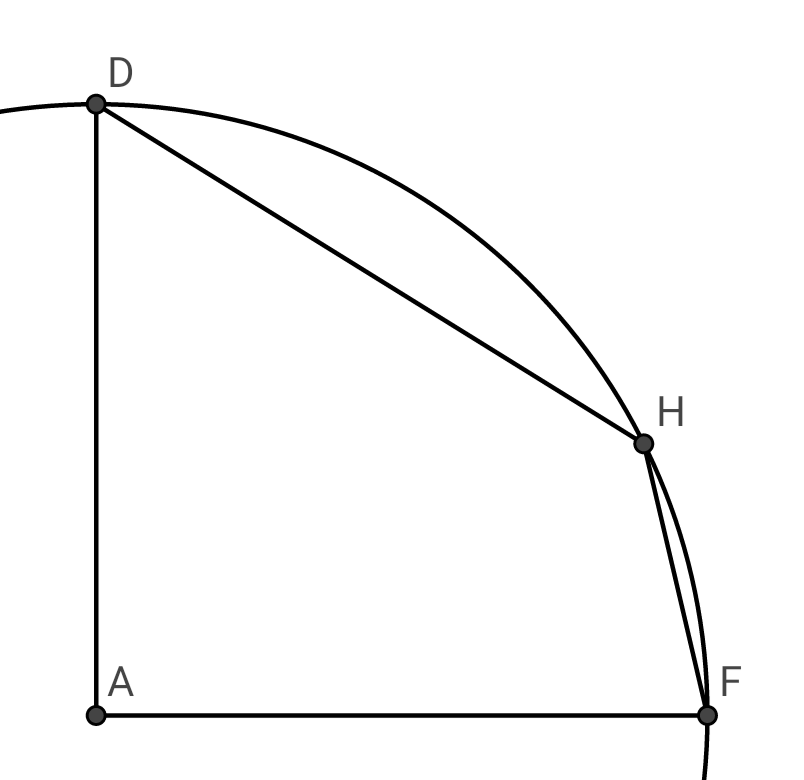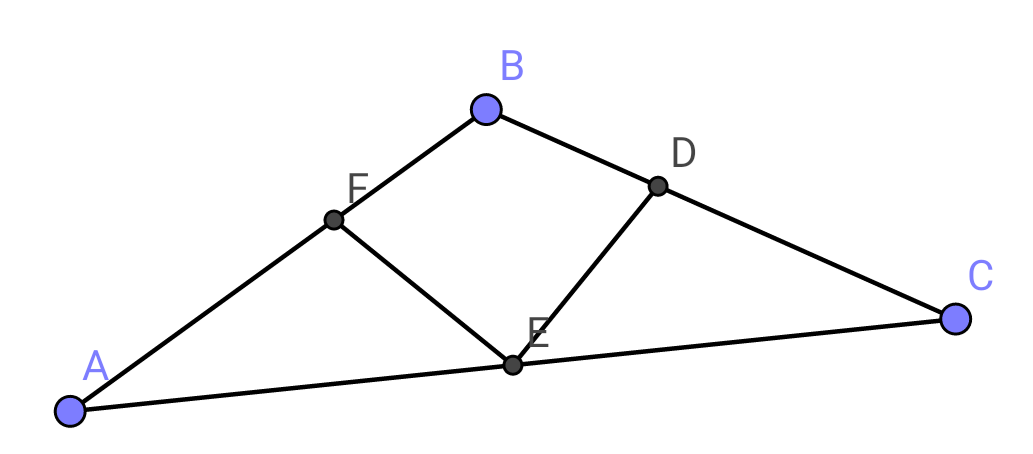
Question and Answers Forum
GeometryQuestion and Answers: Page 104









Pg 99 Pg 100 Pg 101 Pg 102 Pg 103 Pg 104 Pg 105 Pg 106 Pg 107 Pg 108
|
Question and Answers Forum |
GeometryQuestion and Answers: Page 104 |
| In ΔABC, r_1 , r_2 and r_3 are the exradii as shown. Prove that r_1 = (Δ/(s − a)) , r_2 = (Δ/(s − b)) and r_3 = (Δ/(s − c)) . Here s = ((a + b + c)/2) . |

|

|
| let a_1 >a_2 >0 and a_(n+1) =(√(a_n a_(n−1 ) )) where n is greater than equal to 2 Then The sequence {a_(2n) } is (1) monotonic increasing (2)monotonic decreasing (3)non monotonic (4)unbounded |

|
| Let ABCDE be an equiangular pentagon whose side lengths are rational numbers. Prove that the pentagon is regular. |
| Prove that the perpendiculars dropped from the midpoints of the sides of a cyclic quadrilateral to the opposite sides are concurrent. |
| Let K, L, M and N be the midpoints of the sides AB, BC, CD and DA, respectively, of a cyclic quadrilateral ABCD. Prove that the orthocenters of the triangles AKN, BKL, CLM and DMN are the vertices of a parallelogram. |
| Let ABCD be a convex quadrilateral. Prove that the orthocenters of the triangles ABC, BCD, CDA and DAB are the vertices of a quadrilateral congruent to ABCD and prove that the centroids of the same triangles are the vertices of a cyclic quadrilateral. |
| Let A′, B′ and C′ be points on the sides BC, CA and AB of the triangle ABC. Prove that the circumcircles of the triangles AB′C′, BA′C′ and CA′B′ have a common point. Prove that the property holds even if the points A′, B′ and C′ are collinear. |
| Let ABCD be a convex quadrilateral. Prove that AB.CD + AD.BC = AC.BD if and only if ABCD is cyclic (Ptolemy′s theorem). |
| In the interior of a quadrilateral ABCD, consider a variable point P. Prove that if the sum of distances from P to the sides is constant, then ABCD is a parallelogram. |
| Let ABCD be a convex quadrilateral and let E and F be the points of intersections of the lines AB, CD and AD, BC, respectively. Prove that the midpoints of the segments AC, BD, and EF are collinear. |
| Let d, d′ be two nonparallel lines in the plane and let k > 0. Find the locus of points, the sum of whose distances to d and d′ is equal to k. |
| Let ABCD be a convex quadrilateral and let k > 0 be a real number. Find the locus of points M in its interior such that [MAB] + 2[MCD] = k. |
| Let ABCD be a convex quadrilateral. Find the locus of points M in its interior such that [MAB] = 2[MCD]. |
| Let ABCD be a convex quadrilateral and M a point in its interior such that [MAB] = [MBC] = [MCD] = [MDA]. Prove that one of the diagonals of ABCD passes through the midpoint of the other diagonal. |
| number of positive integers a and b and c satisfying a^b^c b^c^a c^a^b =5abc |
| A cirlce is drawn to touch the sides of a triangle whose sides are 12cm,10cm,and 9cm. Find the radius of the circle. |

|

|

|
| multiply 3x+4y+5x−8y |

|

|

|
Pg 99 Pg 100 Pg 101 Pg 102 Pg 103 Pg 104 Pg 105 Pg 106 Pg 107 Pg 108 |